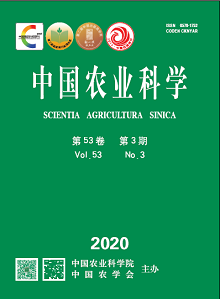【Objective】The objective of this study is to determine the occurrence, main distribution area, natural host and biological characteristics including host range, transmission way and pathogenicity of Tomato mottle mosaic virus (ToMMV) in solanaceae crops of China, which is a newly identified species in the genus Tobamovirus.【Method】Using RT-PCR method, the suspected virus-infected pepper, tomato, eggplant, potato, tobacco of solanaceae crops showing mosaic, shrinking, malformation, yellowing, necrosis symptoms collected from 13 provinces/autonomous regions (Yunnan, Guizhou, Sichuan, Hainan, Hunan, Henan, Shaanxi, Shandong, Hubei, Zhejiang, Liaoning, Tibet and Inner Mongolia) of China in 2013-2017 were detected. Transmission ways were tested by mechanical inoculation and injection, by ToMMV detection in the seeds obtained from ToMMV-infecting tobacco and the seedlings germinated from the seeds, as well as in the 6-8 leaves seedlings of pepper and tomato germinated from the healthy seeds grew in the ToMMV-contaminated soils. Host range test of ToMMV on 30 plants in 6 families such as Solanaceae, Cucurbitaceae, Leguminosae, Cruciferae and disease resistance evaluation of different pepper and tomato varieties against ToMMV were carried out.【Result】A total of 1 622 suspected virus-diseased samples of solanaceae crops were collected from 13 provinces/autonomous regions, and the average detection rate of ToMMV was 2.59%, which occurred in 7 provinces/autonomous regions including Yunnan, Hunan, Hainan, Liaoning, Shaanxi, Tibet and Inner Mongolia. ToMMV infection in pepper was detected in Yunnan, Hunan, Hainan, Shaanxi and Tibet, while the infection of ToMMV in tomato was detected in Yunnan, Hainan, Liaoning and Inner Mongolia, with the average detection rates of 2.51% and 3.46%, respectively. No ToMMV was detected in eggplant, potato and tobacco. ToMMV could be transmitted by mechanical inoculation, injection, virus-contaminated seeds and virus-contaminated soils under experimental conditions, and showed the higher ToMMV infection rate in the seeds, the greater impact on the growth of seedlings. ToMMV could infect almost all of the tested solanaceae and cruciferae plants, and some leguminosae and cucurbitaceae plants. One pepper germplasm material was identified as immune to ToMMV, and two pepper germplasm materials were high resistance to ToMMV, while two tomato germplasm materials showed high resistance to ToMMV.【Conclusion】ToMMV has been occurring on pepper and tomato in China at present, and the host range of ToMMV is wide and the pathogenicity is strong under experimental conditions. ToMMV has a gradual spread and epidemic trend in China, and it is likely to become one of the most harmful viruses on vegetable crop production, especially in solanaceae crops in the future.









